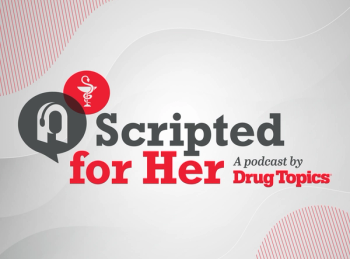
Top 3 PBMs Contribute to Over 1500% Increase in Formulary Exclusions Since 2014
For biosimilar, generic, and branded medications, Cencora researchers conducted a report detailing growth in formulary exclusions among the 3 largest pharmacy benefit managers in the US.
Highlighting their continued and mounting control over medication access, the country’s 3 largest pharmacy benefit managers (PBMs) have increased the number of medicines excluded from formularies by over 1500% since 2014. According to a Cencora report, CVS Caremark, Express Scripts, and OptumRx have significantly contributed to formulary exclusions, leading to trends of increased out-of-pocket (OOP) costs and delays in treatment for patients.1
“Pharmacy benefit managers (PBMs) act as intermediaries between pharmaceutical manufacturers and their clients (insurers, employers, and other payers) to negotiate coverage and reimbursement arrangements for prescription medicines,” the authors of the report wrote. “By creating and managing prescription medicine formularies that determine which medicines are covered, the cost-share patients pay, and any utilization management or restrictions on medicine use, PBMs exert enormous control over patients’ access to medicines and whether or not they are affordable to patients.”
While several pharmacy industry experts have been investigating PBM practices for quite some time, it was not until last year that they were firmly placed into the public eye. With the release of the Federal Trade Commission’s interim staff report on PBMs, the “Big 3” were known to those outside of pharmacy as the main facilitators of prescription drug benefits in the US. Along with CVS Caremark, Express Scripts, and OptumRx, the Big 3 were also accompanied by Humana Pharmacy Solutions, MedImpact Healthcare Systems, and Prime Therapeutics as key holders of the pharmacy benefits market share.2
READ MORE:
According to the FTC report, the top 3 PBMs control 80% of prescription drug benefits, while the top 6 control 90%. To put this immense control into perspective, PBMs are responsible for the prescription drug benefits of over 266 million patients with both public and private insurance.1
Since they have taken significant market power, PBMs have merged with specialty and mail-order pharmacies to expand their reach. Through various tactics employed to manage patients’ medication use and costs, PBMs have been able to further increase their control over medication access in the US.
The current report, however, focuses solely on one PBM tactic that has only been successful within the past 15 years.
“The purpose of this current analysis is to assess the degree of continued growth in formulary exclusions among the Big 3 PBMs in recent years and to evaluate the extent of formulary exclusions among biosimilars and generics specifically,” the authors of the report continued.1 “Further, the goal is to provide relevant observations about formulary exclusions and emerging trends influenced by vertical integration among PBMs in the pharmaceutical market.”
A formulary exclusion, according to a 2022 Cencora report, is when a PBM does not include a specific medication on its formulary. In turn, this could force patients who need the excluded medications to incur full OOP costs or experience burdensome delays or appeals processes.3
To understand the extent of these burdens and how PBMs have impacted US patients, researchers explored the exclusion lists of Express Scripts, CVS Caremark, and OptumRx between 2014 and 2015.1 According to their findings, medications to treat chronic conditions, single-sourced branded drugs, biosimilars, and generics have been increasingly excluded year over year.
In 2025, the Big 3 PBMs excluded 1453 unique medications, an increase of 1233% since 2014 and an average increase of 27% each year. Branded drugs accounted for 58% of exclusions and increased from 50 to 842 throughout the 11-year period. Generic exclusions have increased by 936% and represent 46% of exclusions. Finally, OptumRx and Express Scripts have each increased exclusions of biosimilars by over 170% since 2022, the year when a significant number of biosimilars came to market.
“The findings presented here show that the number of medicines excluded from the standard commercial formularies of the nation’s 3 largest PBMs has grown dramatically since this practice began, increasing by 1584% since 2014,” the authors wrote.1 “These trends are particularly troubling for patients who may require treatment with a formulary-excluded medicine and may be forced to pay the full price OOP or undertake a burdensome appeals process, which may ultimately delay treatment.”
Despite only focusing on PBMs’ formulary exclusions, this report paints a significantly alarming picture for patients seeking life-saving medications. With constant discussion surrounding patients’ inability to afford medications, experts believe PBMs need federal reform to correct the unfortunate state of prescription drug access in the US.4
“Through these actions, PBMs and their parent companies inflate their own profits, while premiums and OOP costs increase for patients,” the authors concluded.1 “Unfortunately, in the absence of changes to underlying financial incentives that drive PBMs’ preferences for high list prices and rebates, much of this anticompetitive behavior will continue, often to the detriment of patients and competition in the pharmaceutical marketplace.”
READ MORE:
Pharmacy practice is always changing. Stay ahead of the curve: Sign up for our
REFERENCES
1. Persistent growth in PBM formulary exclusions continues to raise concerns about patient access. Cencora. July 23, 2025. Accessed August 1, 2025. https://go.cencora.com/cencora-formulary-exclusions-white-paper
2. FTC releases interim staff report on prescription drug middlemen. News release. Federal Trade Commission. July 8, 2024. Accessed August 1, 2025. https://www.ftc.gov/news-events/news/press-releases/2024/07/ftc-releases-interim-staff-report-prescription-drug-middlemen
3. Skyrocketing growth in PBM formulary exclusions continues to raise concerns about patient access. Cencora. May 2022. Accessed August 1, 2025. https://www.xcenda.com/-/media/assets/xcenda/english/content-assets/white-papers-issue-briefs-studies-pdf/xcenda_pbm_exclusion_may_2022.pdf
4. Martin K. What pharmacy benefit managers do and how they contribute to drug spending. The Commonwealth Fund. March 17, 2025. Accessed August 1, 2025. https://doi.org/10.26099/fsgq-y980
Newsletter
Pharmacy practice is always changing. Stay ahead of the curve with the Drug Topics newsletter and get the latest drug information, industry trends, and patient care tips.
























































































































